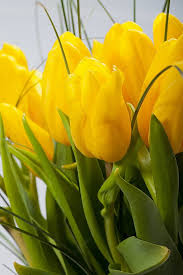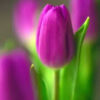Cultural Activities in the Imperial Palaces: Calligraphy, Painting, and Music

The imperial palaces of China, including the famed Forbidden City in Beijing, were not only centers of political power but also hubs of rich cultural activities. These palaces were home to emperors, their families, courtiers, and an array of talented artists, musicians, and scholars. The walls of the palaces were adorned with magnificent calligraphy and paintings, and the air resonated with the harmonious sounds of music. These cultural practices were deeply intertwined with the philosophy and lifestyle of the imperial court and played an integral role in shaping China’s cultural legacy.
The importance of calligraphy, painting, and music within the imperial palace cannot be overstated. These arts were seen as reflections of the emperor’s refined taste, intellectual pursuits, and connection with the heavens. This article explores the role of these cultural activities in the palace setting, their significance in imperial China, and the ways in which they were used to express power, knowledge, and divine authority.
1. Calligraphy: The Art of Expression and Power
In imperial China, calligraphy was more than just a means of communication—it was a revered art form and a reflection of one’s character, intellect, and even political power. Calligraphy was closely tied to the emperor’s role as the “Son of Heaven,” as it was believed that the emperor’s handwriting had a divine power that could influence the heavens and bring prosperity to the empire.
Imperial Calligraphy was often seen as a symbol of the emperor’s status and intellectual prowess. Emperors, who were often well-educated in Confucian classics, would engage in writing as a form of personal expression, as well as a tool for official decrees, records, and correspondence. Script was highly symbolic in this respect, and each type of script had its own significance. The Regular Script (Kaishu), Clerical Script (Lishu), and Running Script (Xingshu) were just a few of the many styles used to express different forms of meaning.
Calligraphy in the Palace
Within the imperial palace, calligraphy served multiple purposes. Emperors would often commission calligraphers to produce official documents or poetic works. Court officials and scholars also played important roles in the production of calligraphic works that would be displayed in the palace, on walls, or even in imperial gardens.
Calligraphy as a Reflection of Power: Calligraphy was a powerful tool for asserting imperial authority. The emperor’s personal writings, such as imperial edicts, were often inscribed with great care and artistic skill. These writings were not only political documents but also works of art that could be admired and revered by the court and the public.
An emperor’s seal, often used to stamp documents, was a powerful symbol of the emperor’s authority. The seal was engraved with the emperor’s name and was sometimes inscribed with calligraphy. This served as both a tool of governance and a means of visual representation, signifying the emperor’s divine right to rule.
2. Painting: The Reflection of Nature, Power, and Virtue
In addition to calligraphy, painting was another significant art form in the imperial palaces. Chinese painting has a long history, with roots extending back to the Han Dynasty, and it flourished in imperial China, particularly in the Tang, Song, Yuan, Ming, and Qing Dynasties.
Court Painters were highly esteemed in the imperial court, often commissioned to create paintings that showcased the emperor’s virility, virtue, and spirituality. Paintings were often used to express the emperor’s connection with nature and the heavens, while also reflecting his power and wisdom.
Themes in Imperial Paintings
One of the main themes in imperial Chinese paintings was nature, with landscapes, animals, and flowers representing the delicate balance of the universe. Landscape paintings, for example, were meant to convey the harmony between heaven and earth, while also symbolizing the imperial mandate. The use of nature in art was connected to Daoism, which emphasizes the interconnectedness of all living things.
Some paintings, particularly during the Ming Dynasty, depicted mythological creatures such as dragons and phoenixes, symbolizing the emperor’s divine connection to these powerful forces. Dragons, which represented strength and power, were closely associated with the emperor, who was often referred to as the Dragon Son of Heaven.
Other paintings in the palace were meant to depict the virtues of the emperor. For example, portraits of emperors were often painted in a way that conveyed not only their physical likeness but also their virtues and wisdom. Emperors would often have their portraits painted in grandiose settings, surrounded by objects that symbolized longevity, prosperity, and peace.
Role of Painting in Cultural Identity
In addition to its political significance, painting in the imperial palace also played a role in the cultural identity of the Chinese empire. Through landscape painting, portraiture, and mythological depictions, the emperor’s court promoted and solidified the Confucian ideals of harmony, order, and filial piety. Painting became a form of state propaganda, reinforcing the emperor’s position as a virtuous leader.
The Influence of Scholars and Artists
Scholars and artists within the court were responsible for the production of these masterpieces. Emperors would often encourage and support talented artists and scholars to produce works that would embellish the palace and serve as a cultural testament to the dynasty’s greatness. For instance, during the Qing Dynasty, Emperor Qianlong was an avid supporter of painting, commissioning numerous works of art that would come to define the imperial aesthetic.
3. Music: The Harmony of Heaven and Earth
In the imperial court, music was considered a crucial element of governance and a key tool for maintaining cosmic harmony. The belief in the power of music to regulate the universe was deeply rooted in Confucianism and Daoism, which regarded music as a way to cultivate virtue and maintain balance between the natural and human worlds. Music was thought to have the power to soothe emotions, reflect moral values, and bring about social harmony.
Music in the Imperial Palace
Within the imperial palace, music had many roles. Court musicians were hired to perform during important occasions such as royal banquets, ceremonies, and official functions. Music was often played during festivals and rituals, and it was considered a necessary part of court life.
The imperial orchestra was a highly structured group, consisting of musicians who specialized in stringed instruments, wind instruments, percussion, and gong music. The sounds produced by the orchestra were meant to create an atmosphere of harmony and tranquility, setting the tone for royal proceedings. Music was not only a source of entertainment but also a reflection of the emperor’s role in maintaining balance between heaven and earth.
Instruments in Imperial Music
The qin (a stringed instrument), flute, pipa (Chinese lute), and guzheng (Chinese zither) were among the most revered instruments in the palace. These instruments were often used in confucian rituals and ceremonies. The qin was especially prized for its serene and contemplative sound and was often associated with scholar-officials. Many emperors, such as Emperor Kangxi, were known to play the qin, using it as a means of self-cultivation and spiritual practice.
Music in the palace was also used to accompany poetry recitations. Poets, scholars, and calligraphers would often perform their works to music, and this practice reinforced the symbiotic relationship between literature and music in imperial court life.
4. The Role of Cultural Activities in the Imperial Court
The arts of calligraphy, painting, and music served not only as expressions of personal virtue and imperial power but also as essential components of the emperor’s governance. These cultural practices were deeply interwoven with Confucian philosophy, which stressed the importance of cultivating virtue through art, ethics, and self-discipline. The emperor was expected to embody these virtues, and the presence of these cultural activities within the palace helped reinforce the emperor’s moral authority.
Furthermore, the engagement in the arts served as a form of cultural diplomacy. As the emperor engaged in calligraphy, painting, and music, he demonstrated the empire’s intellectual and artistic superiority. The imperial court, as the center of culture and power, was a reflection of the grandeur and sophistication of China’s civilization.
5. Conclusion
Cultural activities in the imperial palaces—such as calligraphy, painting, and music—were more than just aesthetic expressions; they were integral to the political and spiritual life of the empire. These art forms helped reinforce the emperor’s divine status, cultivated moral virtues, and maintained the harmony of the empire. As a result, the imperial palaces of China were not only centers of political governance but also hubs of cultural flourishing, where art, music, and intellect came together to express the empire’s grandeur and its ruler’s power. The legacy of these cultural practices continues to influence Chinese culture today, showcasing the enduring value placed on the arts within Chinese society.

